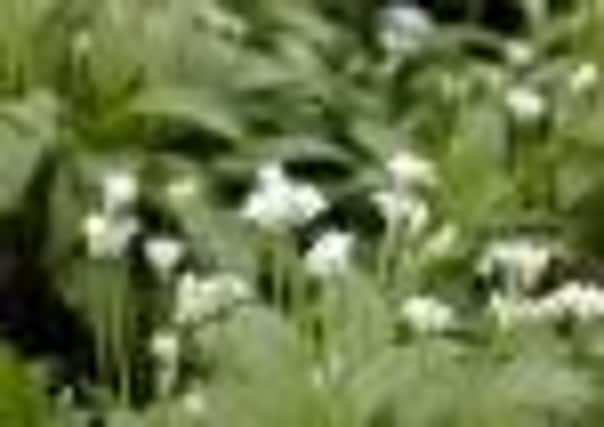Dining out for free on one of the wonders of nature


Across Yorkshire, alongside becks and streams, from the Dales to the coast, from the moors of the north to the Wolds of the south, the woods are coming alive with that most pungent of wild flowers – wild garlic, or Allium ursinum to give it its scientific name
It’s a relative of ‘real’ garlic and has, because of its aroma, become known by a range of names – ‘stinking onions’, ‘stinking nannies’ etc. Though its old name of ramsons is commonly used and comes from the Old English root ‘hrmsa’.
Advertisement
Hide AdAdvertisement
Hide AdA stand of wild garlic can be almost overpowering, especially as the small star-like flowerheads begin to open, but the leaves and, indeed, the blooms themselves are fantastic for cooking.
Fresh leaves, when washed, can be added to salads; chopped, they can flavour soups.
The small corms can be dug up and used as you would culinary garlic (seek the landowner’s permission should you do so).
Flowers can be gathered before they go to seed, dipped in a light tempura batter and quickly fried to create a delicious snack or garnish to a larger meal.
Advertisement
Hide AdAdvertisement
Hide AdThe small black seeds can also be harvested for use and are great for adding to bread instead of poppy seeds.
Overall, though, my favourite use of this versatile plant is to create a pesto.
The recipe below makes a medium-sized jam jar’s worth and can be kept in the fridge for many weeks.
Uses for it need only be limited by your imagination: stirring into pasta, adding to mash potato, mixing into pizza sauce or even just spreading onto crusty bread will allow you to savour this wonderful herb for many weeks to come.
If you really take to cooking with wild garlic, you may
Advertisement
Hide AdAdvertisement
Hide Adconsider gathering the seeds and sowing them into a shady spot in your own garden.
It will take two years before you have good-sized leaves for cooking, but it is well worth it.
100g washed wild garlic leaves
50g parmesan
50g pine nuts (sunflower seeds are ok)
¼ tsp salt
¼ tsp pepper
Squirt of lemon juice (to taste)
100ml olive oil
Make sure you wash and then dry the leaves thoroughly.
Use a food processor (or pestle and mortar if you fancy being a bit ‘old school’) to grind all the ingredients separately before combining and mixing into a paste.
Put in a jar and top up with olive oil – easy.